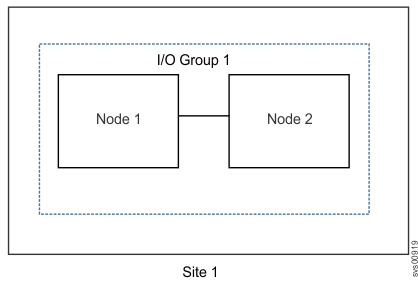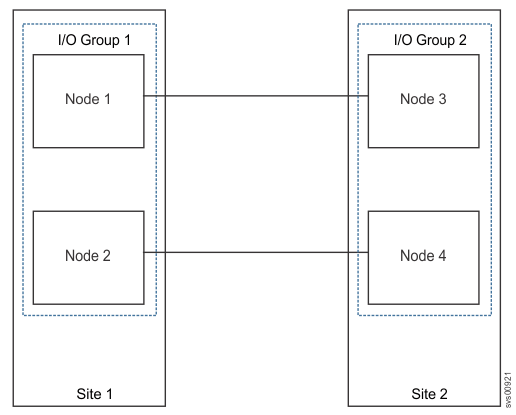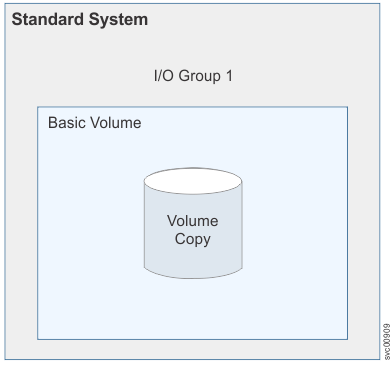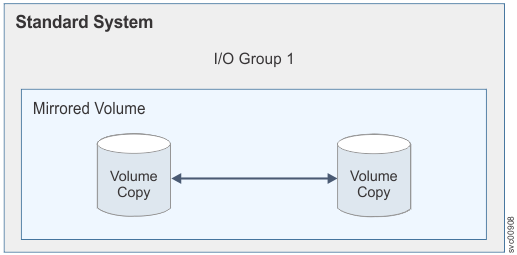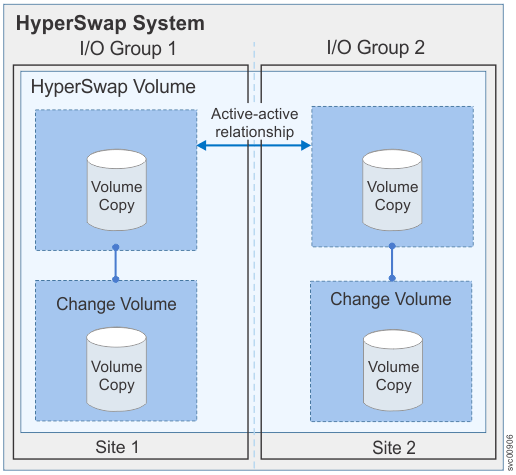Storwize V5000 Gen2 overview
Each IBM® Storwize® V5000 Gen2 system is a virtualizing RAID storage system. Storwize V5010, Storwize V5020, Storwize V5030, and Storwize V5030F systems are Storwize V5000 Gen2 systems.
Storwize V5000 Gen2 software
IBM Storwize V5000 Gen2 systems are built with IBM Spectrum Virtualize software , which is part of the IBM Spectrum Storage™ family.
Storwize V5000 Gen2 hardware
The Storwize V5000 Gen2 storage system consists of a set of drive enclosures. The control enclosure contains disk drives and two node canisters. Expansion enclosures contain disk drives and two expansion canisters.
| IBM Storwize V5000 Gen2 model | Warranty | Machine type / model | Description |
|---|---|---|---|
| IBM Storwize V5010 | 1 year | 2077-112 | 12-slot Control enclosure for 3.5-inch drives |
| 2077-124 | 24-slot Control enclosure for 2.5-inch drives | ||
| 3 years | 2078-112 | 12-slot Control enclosure for 3.5-inch drives | |
| 2078-124 | 24-slot Control enclosure for 2.5-inch drives | ||
| IBM Storwize V5020 | 1 year | 2077-212 | 12-slot Control enclosure for 3.5-inch drives |
| 2077-224 | 24-slot Control enclosure for 2.5-inch drives | ||
| 3 years | 2078-212 | 12-slot Control enclosure for 3.5-inch drives | |
| 2078-224 | 24-slot Control enclosure for 2.5-inch drives | ||
| IBM Storwize V5030 | 1 year | 2077-312 | 12-slot Control enclosure for 3.5-inch drives |
| 2077-324 | 24-slot Control enclosure for 2.5-inch drives | ||
| 3 years | 2078-312 | 12-slot Control enclosure for 3.5-inch drives | |
| 2078-324 | 24-slot Control enclosure for 2.5-inch drives | ||
| 2078-U5A | 24-slot Control enclosure for 2.5-inch drives (Utility mode) | ||
| IBM Storwize V5030F | 1 year | 2077-AF3 | 24-slot Control enclosure for 2.5-inch flash drives |
| 3 years | 2078-AF3 |
| IBM Storwize V5000 Gen2 model | Warranty | Machine type / model | Description |
|---|---|---|---|
|
|
1 year | 2077-12F | 12-slot expansion enclosure for 3.5-inch drives |
| 2077-24F | 24-slot expansion enclosure for 2.5-inch drives | ||
| 2077-92F | 92-slot expansion enclosure for 2.5-inch or 3.5-inch drives and two secondary expander modules | ||
| 3 years | 2078-12F | 12-slot expansion enclosure for 3.5-inch drives | |
| 2078-24F | 24-slot expansion enclosure for 2.5-inch drives | ||
| 2078-92F | 92-slot expansion enclosure for 2.5-inch or 3.5-inch drives and two secondary expander modules | ||
| Storwize V5030F | 1 year | 2077-AFF | 24-slot expansion enclosure for 2.5-inch flash drives |
| 2077-A9F | 92-slot expansion enclosure for flash drives and two secondary expander modules | ||
| 3 years | 2078-AFF | 24-slot expansion enclosure for 2.5-inch flash drives | |
| 2078-A9F | 92-slot expansion enclosure for flash drives and two secondary expander modules |
Figure 1 shows a Storwize V5000 Gen2 system as a traditional RAID storage system. The internal drives are configured into arrays. Volumes are created from those arrays.
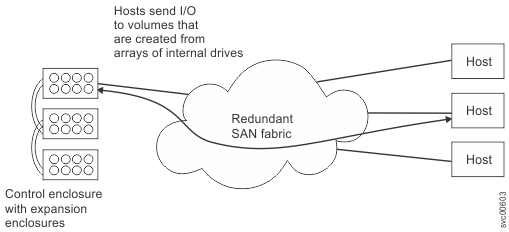
The two node canisters are known as an I/O group. The node canisters are responsible for serving I/O on the volumes. Because a volume is served by both node canisters, no availability is lost if one node canister fails or is taken offline. The Asymmetric Logical Unit Access (ALUA) features of SCSI are used to disable the I/O for a node before it is taken offline or when a volume cannot be accessed through that node.
System topology
Volumes types
System management
The Storwize V5000 Gen2 nodes operate as a single system and present a single point of control for system management and service. System management and error reporting are provided through an Ethernet interface to one of the nodes in the system, which is called the configuration node. The configuration node runs a web server and provides a command-line interface (CLI). The configuration node is a role that either node can take. If the current configuration node fails, the other node becomes the configuration node. Each node also provides a command-line interface and web interface for servicing hardware.
Fabric types
I/O operations between hosts and Storwize V5000 Gen2 nodes and between Storwize V5000 Gen2 nodes and RAID storage systems use the SCSI standard. The Storwize V5000 Gen2 nodes communicate with each other by using private SCSI commands.
Table 3 shows the fabric types that can be used for communicating between hosts, nodes, and RAID storage systems. All installed fabric types can be used at the same time.
| Communications type | Host to Storwize V5000 Gen2 | Storwize V5000 Gen2 to storage system |
|---|---|---|
| iSCSI (1 Gbps Ethernet) | Yes | No |
| iSCSI (10 Gbps Ethernet) | Yes Note:
Storwize V5010 and Storwize V5020 systems must have the optional 10
Gbps Ethernet host interface adapter to use
Ethernet for host attachment.
Storwize V5030 and Storwize
V5030F systems have a 10 Gbps
Ethernet port that is preinstalled on the system for host attachment.
|
No |
| iSCSI (25 Gbps Ethernet) | Yes | No |
| Fibre Channel over Ethernet | Yes, with 10 Gbps Ethernet host interface adapter | Yes, with 10 Gbps Ethernet host interface adapter |
